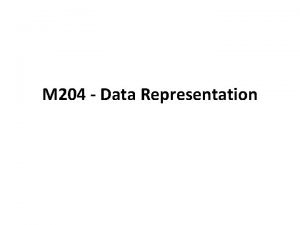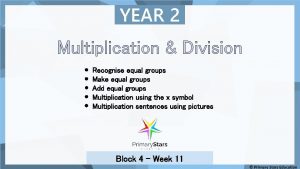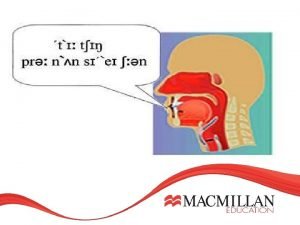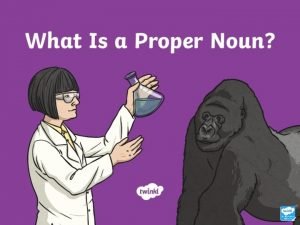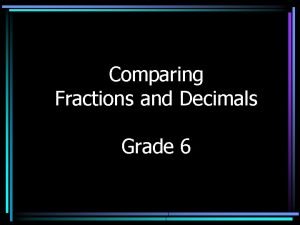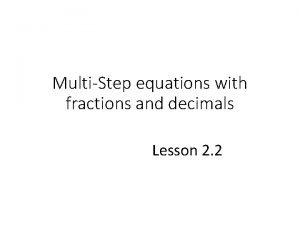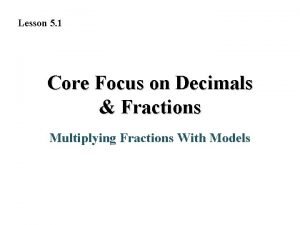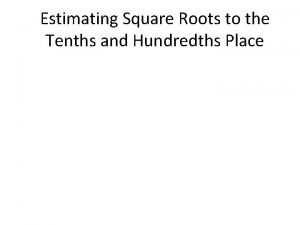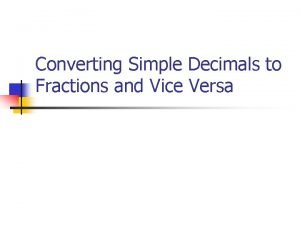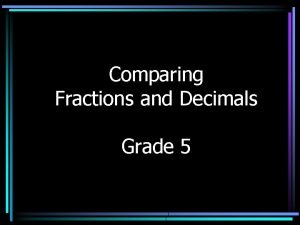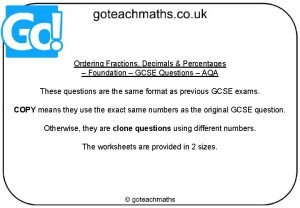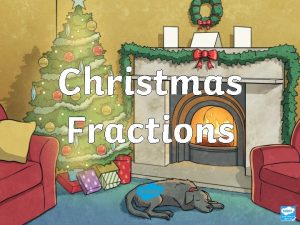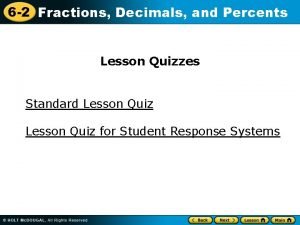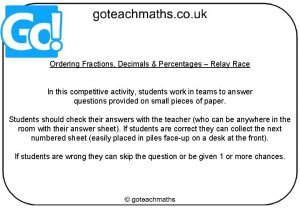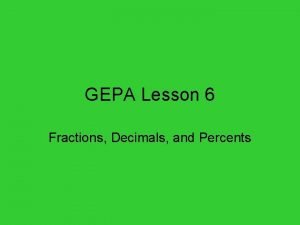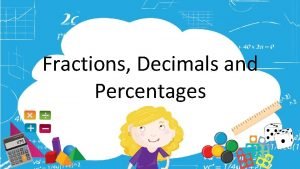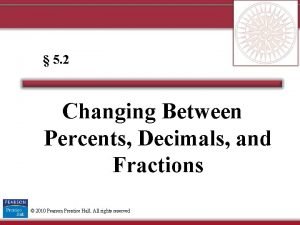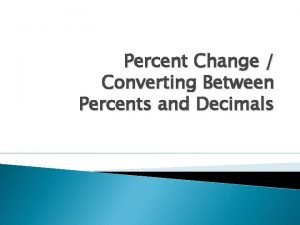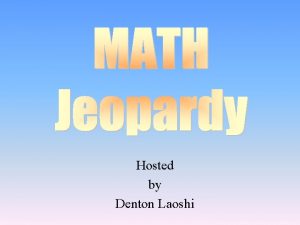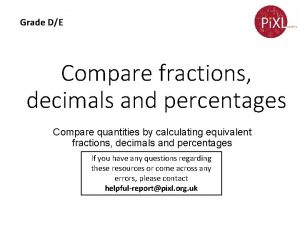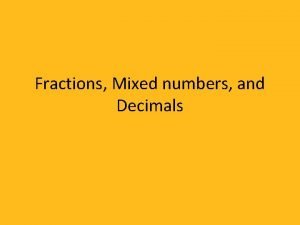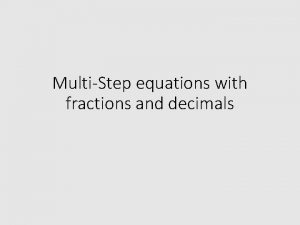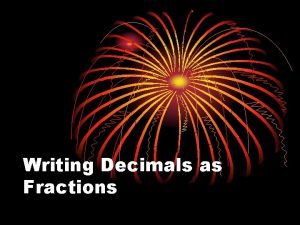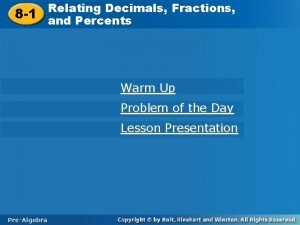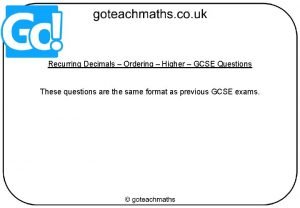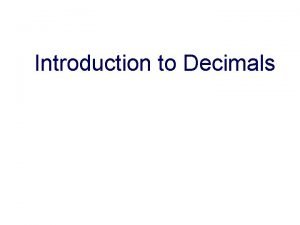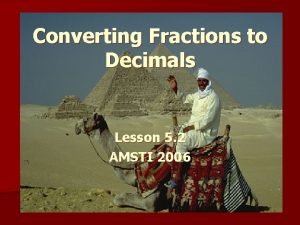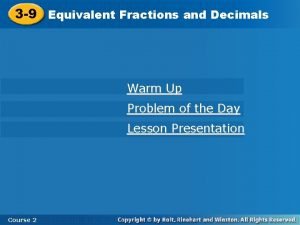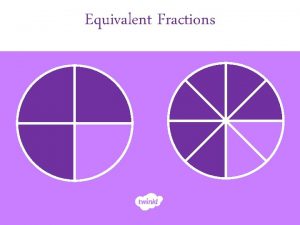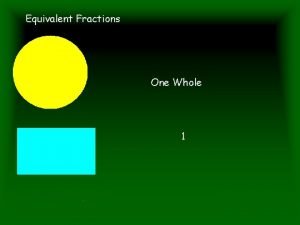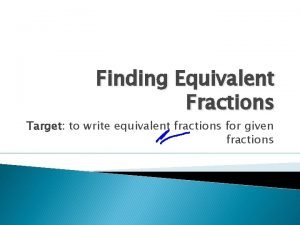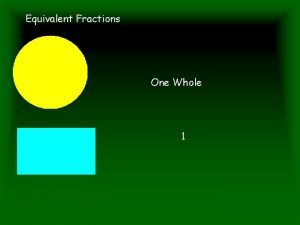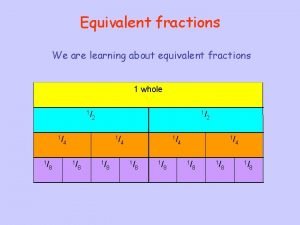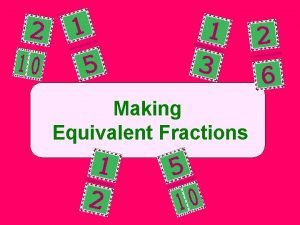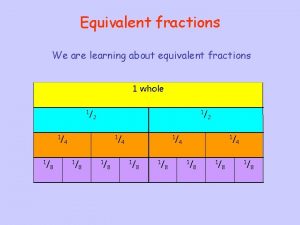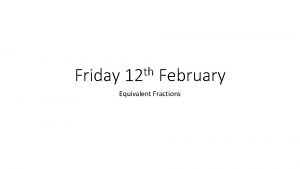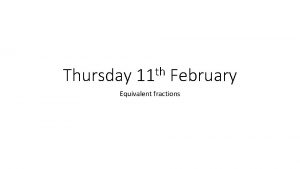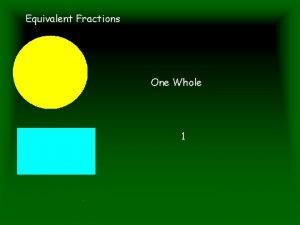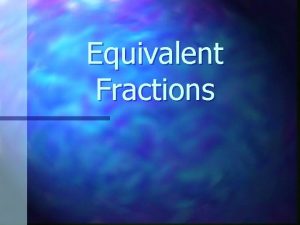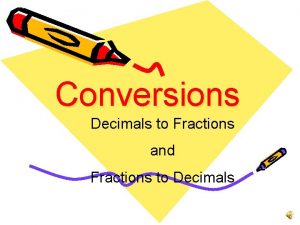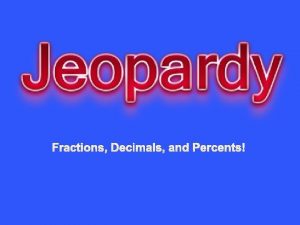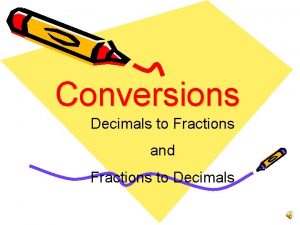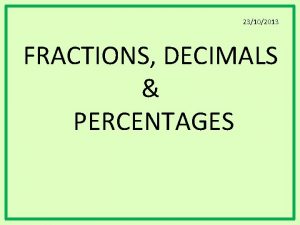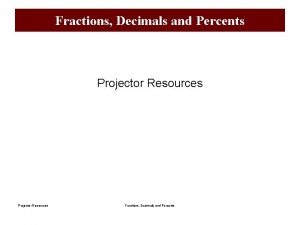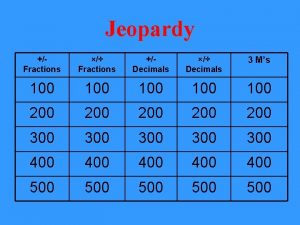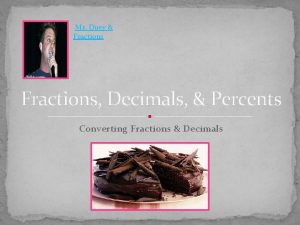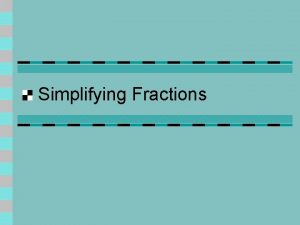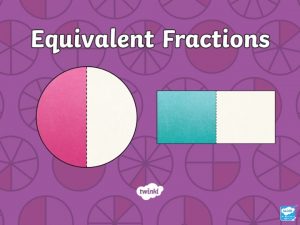Decimals and Fractions Recognise and use equivalent fractions































- Slides: 31

Decimals and Fractions Recognise and use equivalent fractions Find percentages and fractions of amounts Objectives Day 1 Revise comparing fractions with different denominators using equivalence. Day 2 Recognise equivalent fractions, decimals and percentages. Day 3 Find percentages of amounts. Day 4 Use mental division and multiplication strategies to find non-unit fractions of amounts. © hamilton-trust. org. uk 1 Year 6

Decimals and Fractions Recognise and use equivalent fractions Find percentages and fractions of amounts Starters Day 1 Write improper fractions as mixed numbers (pre-requisite skills) Day 2 Equivalent fractions and decimals (pre-requisite skills) Day 3 Equivalent fractions and percentages (pre-requisite skills) Day 4 Find unit fractions of amounts within tables (pre-requisite skills) © hamilton-trust. org. uk 2 Year 6

Decimals and Fractions Recognise and use equivalent fractions Find percentages and fractions of amounts Starter Write improper fractions as mixed numbers © hamilton-trust. org. uk 3 Year 6

Decimals and Fractions Recognise and use equivalent fractions Find percentages and fractions of amounts Starter Equivalent fractions and decimals © hamilton-trust. org. uk 4 Year 6

© hamilton-trust. org. uk 5 Year 6

Decimals and Fractions Recognise and use equivalent fractions Find percentages and fractions of amounts Starter Equivalent fractions and percentages © hamilton-trust. org. uk 6 Year 6

Decimals and Fractions Recognise and use equivalent fractions Find percentages and fractions of amounts Starter Find unit fractions of amounts within tables © hamilton-trust. org. uk 7 Year 6

Decimals and Fractions Recognise and use equivalent fractions Find percentages and fractions of amounts Objectives Day 1 Revise comparing fractions with different denominators using equivalence. © hamilton-trust. org. uk 8 Year 6

Day 1: Revise comparing fractions with different denominators using equivalence. Discuss in pairs which fractions with denominators less than 15 can be written as 1/15 s. 2/ 3 and 3/ 5 1/ 1/ 5/ = 3 15 3/ = 5 15 We can write these as the same ‘sort’ of fractions, i. e. fractions with a common denominator, in this case 1/15 s, to compare them. Write both fractions as 1/15 s, then write > or < to compare 2/ and 3/ 3 5. © hamilton-trust. org. uk 9 10/ 9/ and 15 15 2/ > 3/ 3 5 Year 6

Day 1: Revise comparing fractions with different denominators using equivalence. Work in pairs to list which fractions with denominators less than 20 can be written as 1/20 s. 1/ 2 s 1/ 4 s 1/ 5 s 1/ Now use equivalence with 1/10 s to compare 1/2 and 3/5, and equivalence with 1/20 s to compare 7/10 and 3/4. 5/ 14/ 20 < 6/ 10, so 15/ 1/ 20, so 2 < 7/ 3/ 10 < 5 3/ 4 Write the fractions as mixed numbers first, and then the fractional parts of each as 1/20 s. Discuss how you could compare 7/ and 5/. 5 4 © hamilton-trust. org. uk 10 < 10 s 10 Year 6

Day 1: Revise comparing fractions with different denominators using equivalence. Whole class investigation Work in pairs to think of as many fractions as you can with denominators less than 12 which can be written as 1/12 s. Use this information to write as many inequalities as you can, e. g. 3/4 < 5/6. Try to include some improper fractions, e. g. 5/3 > 9/6. © hamilton-trust. org. uk 11 Year 6

Challenge © hamilton-trust. org. uk 12 Year 6

Decimals and Fractions Recognise and use equivalent fractions Find percentages and fractions of amounts Objectives Day 2 Recognise equivalent fractions, decimals and percentages. © hamilton-trust. org. uk 13 Year 6

Day 2: Recognise equivalent fractions, decimals and percentages. There are 100 beads, so each bead is 1/100 of the whole bar of beads. ‘Per cent’ means out of 100. Each bead is 1% of the total number of beads. 0% 1% ≡ 1/100 100% 5% 1/ 20 0. 05 This is 5/100 or 5%. How else can we write this fraction? What’s the equivalent decimal? © hamilton-trust. org. uk 14 Year 6

Day 2: Recognise equivalent fractions, decimals and percentages. There are 100 beads, so each bead is 1/100 of the whole bar of beads. ‘Per cent’ means out of 100. Each bead is 1% of the total number of beads. 0% 5% 1/ 20 0. 05 1% ≡ 1/100 100% 15% 3/ 20 0. 15 This is 15/100 or 15%. How else can we write this fraction? What’s the equivalent decimal? © hamilton-trust. org. uk 15 Year 6

Day 2: Recognise equivalent fractions, decimals and percentages. There are 100 beads, so each bead is 1/100 of the whole bar of beads. ‘Per cent’ means out of 100. Each bead is 1% of the total number of beads. 0% 5% 1/ 20 0. 05 15% 3/ 20 0. 15 35% 7/ 20 0. 35 100% This is 35/100 or 35%. How else can we write this fraction? What’s the equivalent decimal? How many beads would I have if I had 20% of the bar? How else can we write 20%? Work with a partner to list different ways. © hamilton-trust. org. uk 1% ≡ 1/100 16 20% 20/ 100 2/ 10 1/ 5 0. 2 Year 6

Day 2: Recognise equivalent fractions, decimals and percentages. Where would 1/3 be on this line? Is 1/3 more or less than 30%? We’re going to divide 100 by 3 on the calculator to find the equivalent percentage… 1/ The equivalent percentage is 33. 3333333. The screen is filled with 3 s! This is a recurring decimal, which means the 3 s will be repeated forever, but we can round it to the nearest whole percent: 33%. 2/ 3 33% 3 67% We can double 1/3 and get 66. 666666. This rounds to 67% (not 66%). What is 2/3 as a percentage? Sketch your own 0– 1 line and mark on as many equivalent fractions and percentages as you can in 5 minutes. © hamilton-trust. org. uk 17 Year 6

Investigation Use ‘Doughnut Percents’ from NRICH: https: //nrich. maths. org/6945 A task involving the equivalence between fractions, percentages and decimals. Members of the group must notice the needs of others and respond. © hamilton-trust. org. uk 18

© hamilton-trust. org. uk 19 Year 6

Decimals and Fractions Recognise and use equivalent fractions Find percentages and fractions of amounts Objectives Day 3 Find percentages of amounts. © hamilton-trust. org. uk 20 Year 6

Day 3: Find percentages of amounts. How can we find 50% of £ 320? 50% is equivalent to 1/ , so we can 2 halve £ 320. £ 120 £ 60 Work out 10% and 1% of £ 320. Finding 1% is the same as finding 1/100. Now we know 50%, we can work out 25%. How? How we can find 10%? 25% is equivalent to 1/. 4 We can halve £ 320, then halve again. This is the same as finding 1/10. © hamilton-trust. org. uk 21 Year 6

Day 3: Find percentages of amounts. What other percentages we could find now? How? And if we know 1%, how can we find 2%? Choose a couple to work out, and we’ll add them to the fact web. £ 120 £ 60 £ 3. 20 Now we know 10%, how can we find 5%? £ 32 © hamilton-trust. org. uk 22 Year 6

Challenge © hamilton-trust. org. uk 23 Year 6

Decimals and Fractions Recognise and use equivalent fractions Find percentages and fractions of amounts Objectives Day 4 Use mental division and multiplication strategies to find non-unit fractions of amounts. © hamilton-trust. org. uk 24 Year 6

Day 4: Use mental division and multiplication strategies to find non-unit fractions of amounts. 1/ 6 of 150 Divide 150 by 6 to find the answer. Discuss in pairs how you can work this out. How did you divide by 6? So, how could we work out 5/6 of 150? We could multiply 25 by 5, or subtract 25 from 150. Do both to check that we get the same answer. 150 25 © hamilton-trust. org. uk 25 25 25 Year 6

Day 4: Use mental division and multiplication strategies to find non-unit fractions of amounts. What other fractions of 150 could we find which would give whole-number answers? Discuss in pairs. HINT! Finding factors of 150 will be helpful. : 1 /2 s 1 / 3 s 1 / 5 s 1/10 s 1/15 s 1/30 s 1/50 s © hamilton-trust. org. uk Choose a fraction. Find the unit fraction of 150, then a non-unit fraction of 150, e. g. 1/5 of 150 then 3/5 of 150, 1/ of 150 then 7/ of 150. 15 15 26 Year 6

Day 4: Use mental division and multiplication strategies to find non-unit fractions of amounts. Whole class activity • Your challenge is to work in pairs to find as many non-unit fractions of 240 as you can. • Did anyone find more than ten non-unit fractions? Well done! What strategies were helpful? © hamilton-trust. org. uk 27 Year 6

© hamilton-trust. org. uk 28 Year 6

Decimals and Fractions Recognise and use equivalent fractions Find percentages and fractions of amounts Objectives Day 1 Revise comparing fractions with different denominators using equivalence. Day 2 Recognise equivalent fractions, decimals and percentages. Day 3 Find percentages of amounts. Day 4 Use mental division and multiplication strategies to find non-unit fractions of amounts. © hamilton-trust. org. uk 29 Year 6

Problem solving and reasoning questions Write three fractions which are equivalent to 3/4. Write three fractions which are equivalent to 2/5. Now add 3/4 and 2/5. True or false? • • 2/ is the same as 20% 0. 4 is the same as 4% 10% is the same as 0. 1 30% is the same as 1/3 5 Find 10% of these prices. Use that to find 20%. (a) £ 14. 20 (b) £ 1. 50 (c) £ 99 Show that one fifth of 320 is 3 less than one third of 201. © hamilton-trust. org. uk 30 Year 6

Problem solving and reasoning questions answers Write three fractions which are equivalent to 3/. 4 E. g. 6/8, 9/12, 12/16, 15/20, 30/40. • Write three fractions which are equivalent to 2/. 5 E. g. 4/10, 6/15, 8/20, 10/25, 20/50. Find 10% of these prices. Use that to find 20%. (a) £ 14. 20 10% is £ 1. 42, 20% is £ 2. 84. (b) £ 1. 50 10% is £ 0. 15, 20% is £ 0. 30 (or 15 p and 30 p). (c) £ 99 10% is £ 9. 90, 20% is £ 19. 80. Now add 3/4 and 2/5. The lowest common denominator is twentieths: 3/ + 2/ = 15/ + 8/ = 23/ = 13/ 4 5 20 20. True or false? • • • 2/ is the same as 20% False, it is equivalent to 40%. 0. 4 is the same as 4% False, it is also equivalent to 40%. 10% is the same as 0. 1 True. Divide by 10 to find 10%. Double 10% to find 20%. 5 © hamilton-trust. org. uk 30% is the same as 1/3 False, 30% is equivalent to 3/10. These can be checked on a 0 -1 (100%) number line showing fraction, decimal and percentage equivalents. Show that one fifth of 320 is 3 less than one third of 201. See below…children should have these or similar calculations to show this. 1/5 of 320 = 320 ÷ 5 = 64 1/3 of 201 = 201 ÷ 3 = 67 31 Year 6
 What is a bit
What is a bit Recognise equal groups year 2
Recognise equal groups year 2 Recognise pronunciation
Recognise pronunciation Proper noun for day
Proper noun for day How to compare decimals and fractions
How to compare decimals and fractions How to multiply fractions with decimals
How to multiply fractions with decimals Compare
Compare What
What Multi step equations with fractions
Multi step equations with fractions Lesson 5 decimals and fractions
Lesson 5 decimals and fractions Roots of decimals and fractions
Roots of decimals and fractions Changing decimals to fractions and vice versa
Changing decimals to fractions and vice versa Channel 5 2005
Channel 5 2005 Ordering fractions decimals and percentages
Ordering fractions decimals and percentages Christmas fraction
Christmas fraction 6-2 relate fractions decimals and percents
6-2 relate fractions decimals and percents Ordering fractions decimals and percentages
Ordering fractions decimals and percentages Two sevenths as a percentage
Two sevenths as a percentage Lesson 6-2 fractions, decimals, and percents answers
Lesson 6-2 fractions, decimals, and percents answers How we use percentages in everyday life
How we use percentages in everyday life Converting between percents decimals and fractions
Converting between percents decimals and fractions Converting between percents decimals and fractions
Converting between percents decimals and fractions Fractions decimals and percents calculator
Fractions decimals and percents calculator Compare fractions decimals and percentages
Compare fractions decimals and percentages Decimals to mixed numbers
Decimals to mixed numbers Multi step equations with fractions
Multi step equations with fractions 99/100 as a fraction in simplest form
99/100 as a fraction in simplest form Percentages fractions
Percentages fractions Recurring decimals gcse
Recurring decimals gcse 98/1000 as a decimal
98/1000 as a decimal Converting fractions to decimals lesson
Converting fractions to decimals lesson Writing fractions as decimals
Writing fractions as decimals
